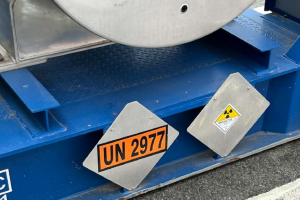Special report: Liverpool City Region – an international city

LIVERPOOL has long been a city open to the rest of the world. As England’s second port for centuries, it has been pivotal to maritime routes.
Home to Europe’s oldest Chinese and African communities, it was the major point of embarkation for hundreds of thousands of European migrants to the New World.
The decline of the docks has been closely linked to the overall decline in the Merseyside economy since WWII, and it is hoped that a revitalisation of the city’s port status can be central to success in the Northern Powerhouse.
The Peel Group’s plan for Liverpool2, a new deep water container terminal, is of major importance.
The £300m Seaforth investment is designed to remodel Liverpool as the main freight and logistics hub for the North of England and Scotland.
It is expected to open in 2017 and to bring total annual container volume to around 2 million.
This story is part of a 16-page special report on the Liverpool City Region.
To download the full report for free, click here
The idea is to reduce the dominance of ports like Southampton and Felixstowe, as well as to capitalise on changes to shipping prompted by the expansion of the Panama Canal, which will mean more ships coming from Asia to the east coast of the US.
Liverpool City Region Local Enterprise Partnership (LEP) plans an £18bn investment in Liverpool2 over the next decade, creating 20,000 jobs.
Liverpool Vision chief executive Max Steinberg envisages shipping being diverted to Liverpool from Rotterdam or Zebrugge.
He said: “This city is potentially facing the biggest change in its DNA, almost back to what it did 100 years ago.”
Former deputy prime minister and now Lord John Prescott, who represented Hull as a Labour MP for 40 years, visited the International Business Festival 2016 in Liverpool in June and delivered a highly positive message about both ports.
He believes Liverpool and Hull will be the key components of a “global corridor” as large containers from the expanded Panama go and onward through the Baltic Sea towards China.
Prescott told delegates attending an International Property Forum dinner at IFB2016: “The main entrance and exit for the biggest consumer market for Europe is Dover.
“87% of our freight now goes via Dover, where there are proposals to build a lorry park for 4,000 lorries. It makes sense to develop a northern route.
“I’m talking about a new European route to take you from Ireland over into Europe.
“It starts now with the development going on in containerisation here in Liverpool, looking at the changes coming about because of the widening of the Panama Canal.
“Liverpool is now taking more trade from America and other parts of the world, having to meet the big demand for container vessels.
“The northern route goes into Europe via Rotterdam, but also the Baltic, and when you go into the Baltic, that is the area that traffic is now beginning to grow.
“These are changes which are taking place. This is not just a northern or European corridor, but is in fact global corridor. So the northern corridor is not just an argument about the Northern Powerhouse or Northern Way, it’s developing the two great assets we’ve got in the north – the two major super ports we’ve got in the regions, connected to trade into Europe and into the Baltic. That is a major change.”
Shula Jones, project lead for the newly opened Port Academy, which will teach skills for the maritime sector, agreed saying: “I think the port is going to be incredibly important in helping to rebalance the UK’s economy.
“You look at the stats and 95% of all the deep sea goods are coming into the UK down south and yet 60% of those goods are straight on the motorways and back up north again. We need to realise the ambitions around the port.
“Investment by Peel into the port is £300m plus, but there’s also the investment of the shipping lines as well.
“It’s all also the growth of SMEs around the port and the environs as well. It’s the ripple effect of the supply chain.
“I suppose for us, because we’ve positioned ourselves to support port development as an advocate for the whole industry and we’re very much a community-based provider as well, our communities look to us as one of the key employers, but also one of the key businesses to generate change and productivity.
“The position that I take through Port Academy Liverpool is that we have a very positive sell here and it’s about the future of jobs, looking at where we are now but also where we can be if we are ambitious.”
Robert Hough, former chairman of Liverpool LEP agreed that 90% of imports were coming from South East ports while 60% are coming north of Birmingham by road.
He said: “There are opportunities to get shipping lines to change their habits and my understanding is that they are doing so.
“It’s very positive, but the SMEs are really waiting to see that happening before they engage. This time next year we should see SMEs responding to the change in the market place.”
Stuart Taylor, whose curtains and soft furnishings company Ena Shaw is based in St Helens, warned that the Tilbury docks in Essex were more competitive than Liverpool, and agreed with others that direct motorway access to Liverpool port was needed.
Michele Dematteis, former managing director of Sovex, provided anecdotal evidence when he said: “We ship three or four containers a week, but until the shipping agents tell us it’s more competitive to go to Liverpool rather than Tilbury Dock, we’ll continue to do that.
“Until it’s commercially viable, we can’t do it. It’s just more expensive. To go to Tilbury and drive past the Liverpool dock is more competitive. I don’t know the mechanics behind that, but I’m sure it’ll change over the next 12 months.”
Hough replied: “It will change.”
This story is part of a 16-page special report on the Liverpool City Region.
To download the full report for free, click here









